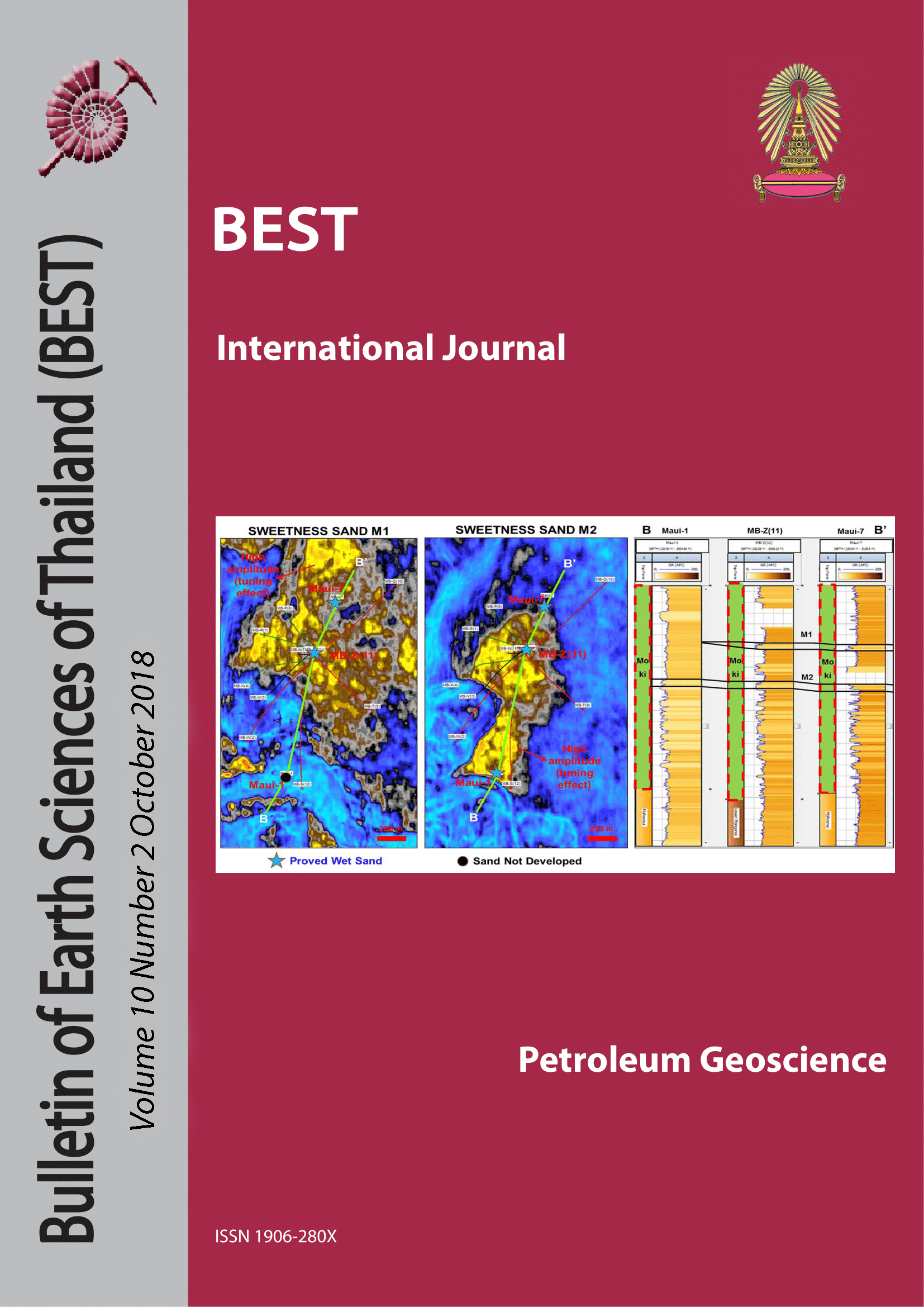Application of seismic attributes and post stack inversion to study different sand reservoir distribution, offshore Vietnam
Main Article Content
Abstract
Nam Con Son Basin is one of the major hydrocarbon producing fields in offshore Vietnam. This field is characterized by complex tectonic settings with extensional activities and uplift events. The interest interval of the study area is the Post rift stage in Upper Miocene of Nam Con Son Basin which developed in a deep marine environment. Thus, the main sand reservoirs are recognized as turbidites with complex geometries which is challenging in understanding the reservoir properties based on conventional full stack seismic data. Goal of the study was to identify and predict the distribution of different sand reservoirs in Upper Miocene, using rock physics analysis and post stack inversion, in combination with seismic attribute analyses. Rock physics analysis greatly assists in the interpreted Post stack inversion by discriminating rock properties of different lithologies and fluids. RMS highlights amplitude anomalies correlated to coarser-grained sediments. Whereas, gas sand or stratigraphic features can be observed from high amplitude in low frequency using the attribute Spectral Decomposition. The gas bearing sand is low P-impedance while wet sand and shale show the higher P-impedance. As the results gained from these analyses, the distribution of different sand reservoirs were predicted based on the combination of Post Stack inversion and amplitude attributes. Furthermore, the special fluid (gas) bearing sand can be imaged by Spectral Decomposition and Post Stack inversion.
Article Details

This work is licensed under a Creative Commons Attribution-NonCommercial-NoDerivatives 4.0 International License.
Copyright © 2008 Department of Geology, Faculty of Science, Chulalongkorn University. Parts of an article can be photocopied or reproduced without prior written permission from the author(s), but due acknowledgments should be stated or cited accordingly.
References
Castagna O., Instantaneous spectral analysis: Detection of low-frequency shadows associated with hydrocarbons. The Leading Edge (2003): 120-127.
Dubey, A. K. Reservoir characterization using AVO and seismic inversion techniques. Journal of Society of Petroleum Geophysicists (2012): 1-7.
Dung, B.V., Tung, N.T., Kieu, N.V., Huyen, N.T.D., Tuan, H.A., Giang, K.H. Depositional facies and environments of Oligocene- Miocene sediments in the central part of Nam Con Son Basin, Southeast Vietnam Shelf. Journal of ELSEVIER (May, 2018): 1-10.
Fyhn, M.B.W, Boldreel, L.O., and Nielsen, L.H. Geological development of the central and South Vietnamese margin: implications for the establishment of the South China Sea, Indochinese escape tectonics and Cenozoic volcanism. Tectonophysics (2009): 184-204.
Liem, P.T., 2013. Some comments on the possibility of middle/ late Miocene –Pliocene stratigraphic traps in the center of Nam Con Son basin. Journal of PetroVietnam Vol.10 (2013).
Pigott, J.D., Kang, M.H., and Han. First order seismic attributes for clastic seismic facies interpretation: Examples from the East China Sea. Journal of Asian Earth Science Vol. 66 (2013): 34-35.
Rotimi, O.J., Wang, Z., Ako, D.B. Seismic attribute utilization for structural pattern detection, fault imaging and prospect identification. Journal of Petroleum & Coal (2014): 532-543.


